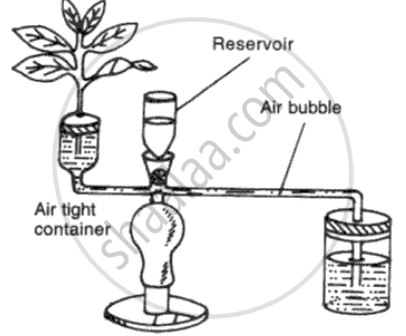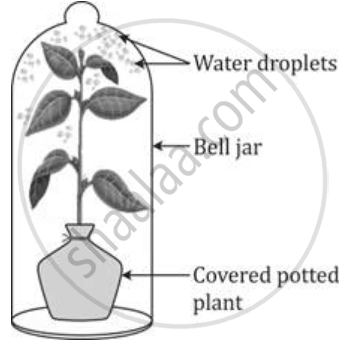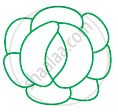Advertisements
Advertisements
Question
Choose the correct answer:
The percentage of cuticular transpiration in plants is _____________
Options
Approximately 10%
Approximately 20%
Approximately 25%
Approximately 30%
Solution
The percentage of cuticular transpiration in plants is approximately 10%
APPEARS IN
RELATED QUESTIONS
Differentiate between Transpiration and Evaporation
What causes the opening and closing of guard cells of stomata during transpiration?
The loss of water in the form of water vapour through stomata on leaves is known as ___________.
Fill in the blank:
Water is lost from the leaves by__________.
The diagram given alongside is an apparatus used to study a particular phenomenon in plants.
(i) Name the apparatus.
(ii) What is it used for?
(iii) What is the role played by the air bubble in this experiment?
(iv) Of what use is the reservoir?

The figure below represents the set-up at the start of certain experiment to demonstrate an activity of plants:
(i) What is the aim of the experiment?
(ii) Why has oil been put in each test tube?
(iii) What will be the observations in the two test-tubes after about 2-3 days?
(iv) Give reasons to explain any change observed as answered in (iii) above.
(v) Why has the test-tube b without the plant, been taken in the experiment?

An apparatus as shown below was set up to investigate a physiological process in plants. The setup was kept in sunlight for two hours. Droplets of water were then seen inside the bell jar. Answer the questions that follow:

Why was the pot covered with a plastic sheet?
Stomata of a plant open due to ______.
Transpiration is a necessary evil in plants. Explain.
Observe the diagram and answer the following;
 (i) |
 (ii) |
- Are these types of guard cells found in monocots or dicots?
- Which of these shows a higher water content (i) or (ii)?
- Which element plays an important role in the opening and closing of stomata?
